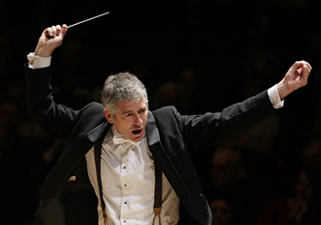Paul Jeffrey worked his way through a box of new reeds and ceaseless adjustments of his tenor saxophone mouthpiece. But the music of the late pianist and composer Thelonious Monk was not to be fine-tuned Thursday night at Duke University’s Reynolds Industries Theatre.
“That’s the best I’ve ever heard Paul play,” my wife said after the concert, billed as “Monk’s Homecoming: Raleigh’s Frog and Nightgown**, 1970.”
Before the performance, brief, taped excerpts from that legendary Frog gig were played twice. Monk, Jeffrey, bassist Wilbur Ware, and drummer Leroy Williams sounded almost avant garde — wilder than I remembered, the drums more explosive. “On, no,” my wife said, “it WAS wild.” (The group’s two-week stand at the Frog was Rocky Mount native Monk’s only major appearance in his home state.)
Thursday’s concert, part of Duke’s “Following Monk” series, a six-week celebration of the 90th anniversary of Monk’s birth, reunited Jeffrey and Williams. Bassist John Ore, a Monk Quartet member from 1960 to ’63, substituted for the late Ware, and young pianist Jason Moran, born five years after the Frog engagement, sat in for Monk.
The quartet reprised the 1970 group’s opening-night set, starting with “Blue Monk.” It began slow and churchy, with Jeffrey attacking his phrases bluntly and bending blue notes deeply, almost a half step, and with Williams playing loose and boppish.
Williams and Ore would play ideal bebop time throughout the concert, and Williams would underscore all the accents in the tunes, cueing the bridge or the next chorus or a tag at the end of the final chorus. When Jeffrey, Moran, or Ore was improvising, you could orient yourself in the form of the tune by listening to Williams if you couldn’t otherwise hear the progression. Very melodic!
If you picture Jeffrey blowing loud and raw, honking B-flats, hesitating a long time between phrases, and then jumping in to echo and embellish a phrase or melodic interval in Moran’s accompaniment, you’ve got it. Oh, and also plunging straight ahead with a body-shaking bebop lick or two from the Dexter Gordon songbook.
Jeffrey’s pitch fluctuation will be the most controversial topic when fans discuss this concert. If the group were playing music of the Modern Jazz Quartet, it would be lethal. But Monk? Monk was a connoisseur of dissonance. Monk made in-tune pianos sound out-of-tune by, it has been said, individually weighing the attack of notes a half-step apart to produce a primary tone and a dissonant shadow tone. This gave the illusion of bent notes, semi-tones…, something in between the fixed string length and fixed tension of individual notes on the piano.
Don Adcock, a former band director at NC State University who attended Monk’s performances at the Frog (but was unable to attend this event), has said that the unresolved dissonance in Monk’s playing bothered him until he began to hear it in its own terms. That’s how you have to dig Jeffrey’s playing – in the context of Monk’s creative use of dissonance, Jeffrey’s early career backing blues and R & B performers and the influence of jazz saxophone contemporaries such as Jackie McLean, Sonny Rollins, and John Coltrane.
So, we have Jeffrey “in tune” with Monk’s dissonance, and Ore and Williams swinging with agreeable looseness, but what about Moran? Perfect — sensitive to his elders’ erudition and experience, hip to a balance between his own style and Monk-like voicings and rhythms, and respectfully brief in his solos and spare in his accompaniment. His improvisation incorporated whole tone scales; fragments of the melody; choppy rhythms leading to longer, flowing runs; independent right and left hand ideas, such as a stationary, eccentrically spinning passage in the left hand juxtaposed against playful melodic skips up the scale in the right; and, unlike Monk, the occasional rhapsodic flowering of harmony.
Ore soloed frequently, sometimes arco, sometimes pizzicato, and showed a dry sense of humor and melodic logic appropriate to Monk. The term “delightful” comes to mind in describing the character of his playing.
The tunes included, among others, “Hackensack,” “Ask Me Now,” “Bright Mississippi,” “Epistrophy,” “Nutty” and, as an encore, “’Round Midnight.” Throughout, we see from the musicians’ demeanor that they dig this reunion. And we hear from the applause and shouts that the full house wants the group to succeed. There is no one here to say, “Well, you needn’t.”
*Note: We are delighted to welcome as a CVNC guest columnist the distinguished jazz scholar and writer, Owen Cordle.
**Raleigh’s Frog & Nightgown, operated by jazz drummer Peter Ingram, was the place for jazz in the Triangle in the ’70s.











